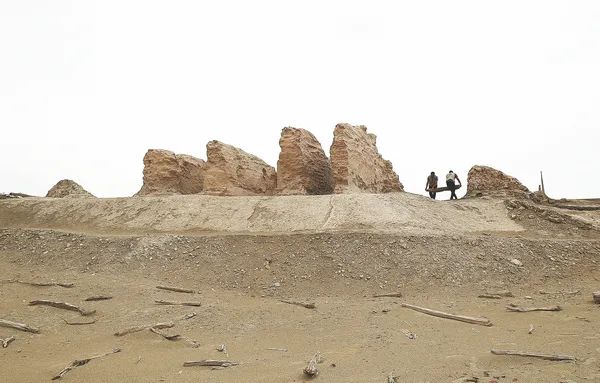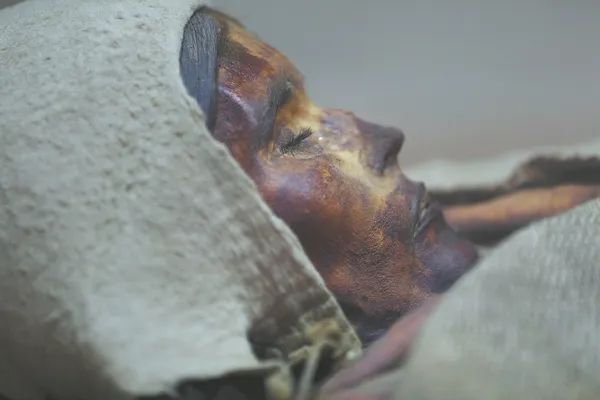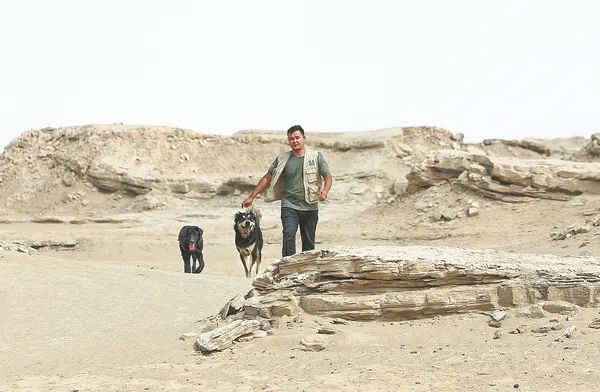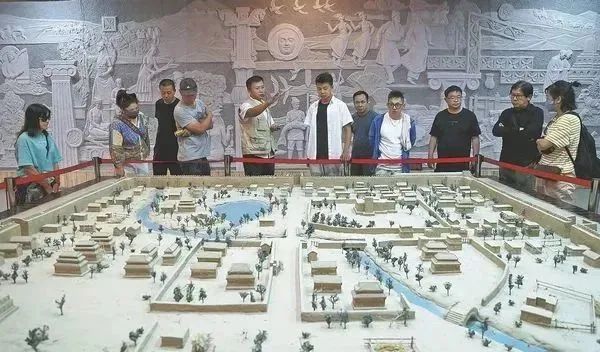Loulan, an ancient city on the Silk Road, conjures up images of mystery and romanticism even as it disappears into the mists of history.
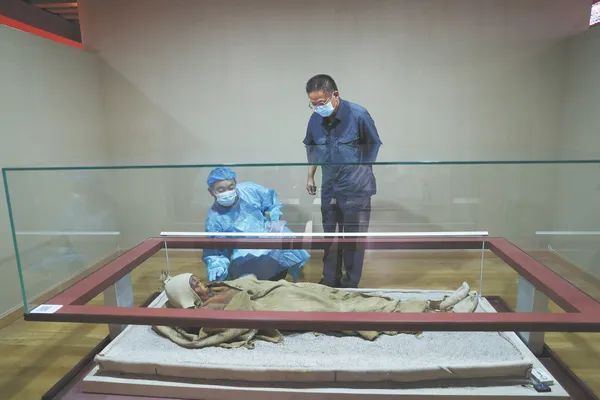
▲ At the Loulan Museum in Ruoqiang county, Bayingolin Mongol autonomous prefecture, Xinjiang Uygur autonomous region, Feng Jing (left), director of the museum, and Jiao Yingxin, former director of the cultural heritage administration of the county, check the "Loulan Beauty", a well-preserved female mummy. [Photo by Zou Hong/China Daily]
Shiji, or Records of the Grand Historian, the foundational text of Chinese history dating back to the first century BC, records that before the 2nd century BC, Loulan was already famous in Xiyu (the western regions, a term to describe today's Xinjiang Uygur autonomous region and Central Asia in ancient times). However, it collapsed in about the 5th century. In 1900, Swedish explorer Sven Hedin discovered the site of ancient Loulan.▲ Ruins of the city of Loulan. [Photo by Zou Hong/China Daily]Located in Lop Nur, a former salt lake which has largely dried up, in Ruoqiang county, Bayingolin Mongol autonomous prefecture, Xinjiang, the Loulan site covers an area of about 120,000 square meters.Its extremely harsh environment ensured that few people set foot on this area.▲ Visitors at the ancient city of Miran in the Lop Nur. Miran was a vitally important oasis city on the Silk Road. [Photo by Zou Hong/China Daily]In the 1990s, when mummies were discovered in this area, grave robbers noticed the wealth of cultural relics.To tackle the situation, a Loulan cultural relics protection station was built in 1998. At first it was seasonal, and later became permanent in 2003.▲ Wrapped in clothes made from linen, cotton and silk, the 3,800-year-old mummy is so well preserved that visitors can clearly see her hair and eyelashes. [Photo by Zou Hong/China Daily]Jiao Yingxin, former director of Ruoqiang Cultural Heritage Administration, was devoted to the protection of the Loulan site for about three decades until retirement. He is also the one who found "Loulan Beauty", a well-preserved female mummy with clearly visible hair and eyelashes, in 2004.Also in Lop Nur is a site called Miran, an ancient city on the Silk Road, which has been opened to the public.▲ Aisikeer Arken takes dogs on a regular patrol of the Luolan site. Altogether there are 20 people working in the five protection stations safeguarding the historical heritage. [Photo by Zou Hong/China Daily]Gao Jinglian is a member of the Miran site protection station, and has worked there for 24 years. "Although the work is tiring, it's meaningful and I have learned a lot from it. I will continue to accomplish my tasks and hope more people can get to know the history and culture of Miran," says Gao.▲ Ma Zhuang, a guide, explains to visitors to the Loulan Museum details of the ancient city. [Photo by Zou Hong/China Daily]
Over the years, five stations have been built in Lop Nur, and altogether 20 people are working at them safeguarding heritage, according to Feng Jing, director of Loulan Museum in Ruoqiang.
Reporter: Wang Ru, Zou HongMao Weihua and Zhang Xiao contributed to this story.

